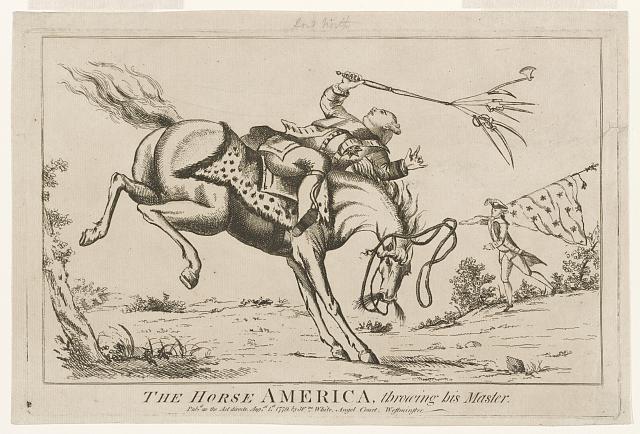This first section of our November series on military records focuses on the American Revolution, when colonists fought to gain independence from British rule. This rebellion led to the creation of the United States of America. The records available for this conflict and timeframe are described by the National Archives and Records Administration (NARA), and include information about the rebellion, the specific types of records held by NARA, and where the records can be found, like Ancestry ($), FamilySearch (free account), and Fold3 ($, or can be included as part of an Ancestry subscription). Often local libraries hold subscriptions to Ancestry and Fold3, so check with them to determine if that access is available to library patrons before subscribing. NARA also has an excellent resource, the Veterans History Project, which facilitates quick searching based on conflict, and military records plus stories, correspondence, and other materials. As described last week in the series’ introduction, it is important for researchers to understand the historical context for this conflict. Resources describing the significance of the American Revolution can be found in the local library, or through specific history websites, like these linked below:
- The History Channel (HC),
- Internet Archive (IA), an excellent repository of free materials,
- Daughters of the American Revolution (DAR),
- The Library of Congress (LOC),
- Google Books (GB), and
- Britannica (B), and there are many more.
As a reminder, November is an excellent month to tag each year on your calendar to revisit military records, as new records are digitized and offered online. Follow SYFT on Facebook, Instagram, Twitter, or LinkedIn, to be alerted when blogs are posted. As you begin researching through the American Revolution military records, I’m happy to talk through what was discovered and offer advice, especially as new clues are discovered about your ancestor(s). You can fill out the Contact SYFT form or email me directly at info@shapingyourfamilytree.com.
NARA American Revolution records:
NARA hold records for various categories of record sets for this conflict. Genealogists will be amazed at the depth of coverage on many of these sets which include bounty land records and war pension applications (for military service members and their widows) for the Revolutionary War and the War of 1812 and other applications to 1855, including ones which were unindexed and / or disapproved.
Official papers created by the founding fathers of the United States and for the Continental Congress, as well as miscellaneous papers, and reports and letters to U.S. ministers and consuls abroad are also a key component of documents for this period. The latter set of letters are arranged chronologically and include correspondence sent by John Jay (Secretary of Foreign Affairs) and Thomas Jefferson (Secretary of State).
Judicial records related to “war prizes” collected from British vessels by American colonies’ ships are quite interesting. The colonies were working to appeal the legal proceedings to keep these prizes, however, General Washington was annoyed with the colonies and wanted to speed up the process to condemn these actions by them. These documents reflect these cases and appeals.
NARA provides the researcher valuable reports which assist in research, like the Revolutionary War Service, 1775–1783, a two-pager which provides detailed record sets held by NARA, and Regular and Volunteer United States Military Service Between the Revolutionary War and the War of 1812, a two-pager which defines the difference between regular (or standing) military forces versus volunteer service, which was temporary.
Other records reflect specifics by military branches as well as managing operations and supplies in the War Department, including accounting for service members’ pay and settlements. Prisoners of war are represented in Prisoners during the Revolutionary War, 1776–1783, a reference report, and a record set, Revolutionary War Service and Imprisonment Cards.
NARA also has a collection of American Revolutionary War pictures and lesson plan information for sharing the details about this military conflict. These two websites, Images of the American Revolution and Pictures of the Revolutionary War, provide wonderful context along with the images.
Most of the records are held by Ancestry, FamilySearch, and / or Fold3. Using these subscription services’ links provided by NARA for each group of records is helpful but searching by keywords like “Revolutionary War” can provide even more collections, like these for the Revolutionary War in Ancestry, FamilySearch, and Fold3.
There are records which are searchable, digitized, transcribed, and held at NARA, as well. To review these records, follow these steps:
Process steps, using an example:
-
- Click on the National Archives Catalog (NAID: 300022) which opens up the 83K records for the series of “Case Files of Pension and Bounty-Land Warrant Applications Based on Revolutionary War Service, ca. 1800 – ca. 1912”.
- Scroll down the page to click on the highlighted bar “Search within this series”.
- As an example, searching Zumwalt, produced six records, one of which was tied directly to an Adam Zumwalt and the other five records having a Zumwalt name within each file.
- In the Adam Zumwalt file (of 68 images), click on each image’s blue ribbon in the top right corner to see the image and the transcription of the text of that page. For example, page two of the Adam Zumwalt file (filed in the State of Missouri in 1832) stated Adam Zumwalt, aged seventy-seven years, had been about 17 years of age when he was in what was called the French war. The 1833 application was submitted for Adam as the pensioner, then in 1845, submitted again for Mary Zumwalt, his wife, as the second pensioner. Adam’s residence information at both ages was also listed, all helpful clues in determining genealogical details about this person.
- The images of these records can also be directly searched for free using Ancestry on the computers at NARA or on your computer with paid subscription services, Ancestry, and Fold3, or using a free FamilySearch account, though none of these services have the records transcribed, which is a plus which NARA provides (instead of deciphering the handwriting on the image). Also, NARA offers the user the option to export the entire transcribed file to various formats (like this PDF of that Adam Zumwalt file). Note: transcriptions should be reviewed closely, as errors can occur.
The next section of this series will cover the War of 1812. Genealogical records, reports and historical context will be provided for that conflict. Be sure and follow SYFT on the social media channels referenced above, or in the footer on any SYFT webpage.
Images. Photograph. The horse America, throwing his master. United States, 1779. Westminster: Published by Wm. White, Aug. 1. https://www.loc.gov/item/97514739/ : accessed 7 November 2022. With permission from the Library of Congress, Prints and Photographs Division, Cartoon Prints, British.

